Starting out in Pastels
Welcome back to our series 'Starting out'. This time we will explore the history of pastel painting, its advantages over other media and all the different materials available for the pastel artist. Stay tuned for a quick pastel painting of a cat where you can see many of the materials in action!
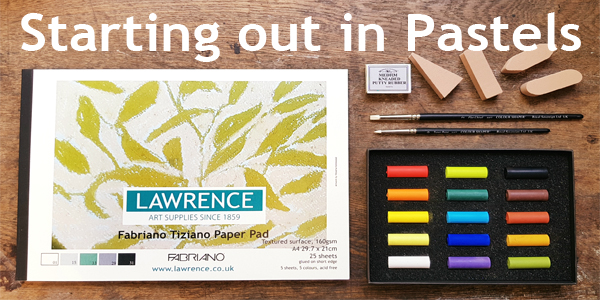
What Are Pastels?
Pastels are powdered pigments held together by a binder and usually rolled into a stick. They use pigments in their purest form with very little additives. The colours are therefore very intense, even when compared to other media such as oils or acrylics. Pastels come in three varieties: soft pastels, hard pastels and oil pastels. While oil pastels are part of the pastel family, they contain oil and wax binder and are not compatible with the other types. To keep this article short, we will only focus on dry pastels this time.

Soft pastels are available in three forms: sticks (the traditional type that you can directly apply to the surface), pans (much like make-up pans) and as pencils. The pastel pigment adheres to the 'tooth' of the surface and it can be applied in layers and manipulated by hand and with tools such as tissue paper, sponges and applicators. Pastels can also be erased with kneaded putty eraser, brushed away completely, and built up in layers protected by fixatives if necessary. It only takes a handful of materials to start making art in this medium and if you have never tried it, here's why you should give it a go.
Why Choose Pastels?
The first pastels were made in Europe in the 15th century and gained peak popularity with 18th century portrait artists such as Jean-Baptiste Perronneau, Jean-Étienne Liotard and Jean-Baptiste-Siméon Chardin who often abandoned their oil painting for this visually unique medium.
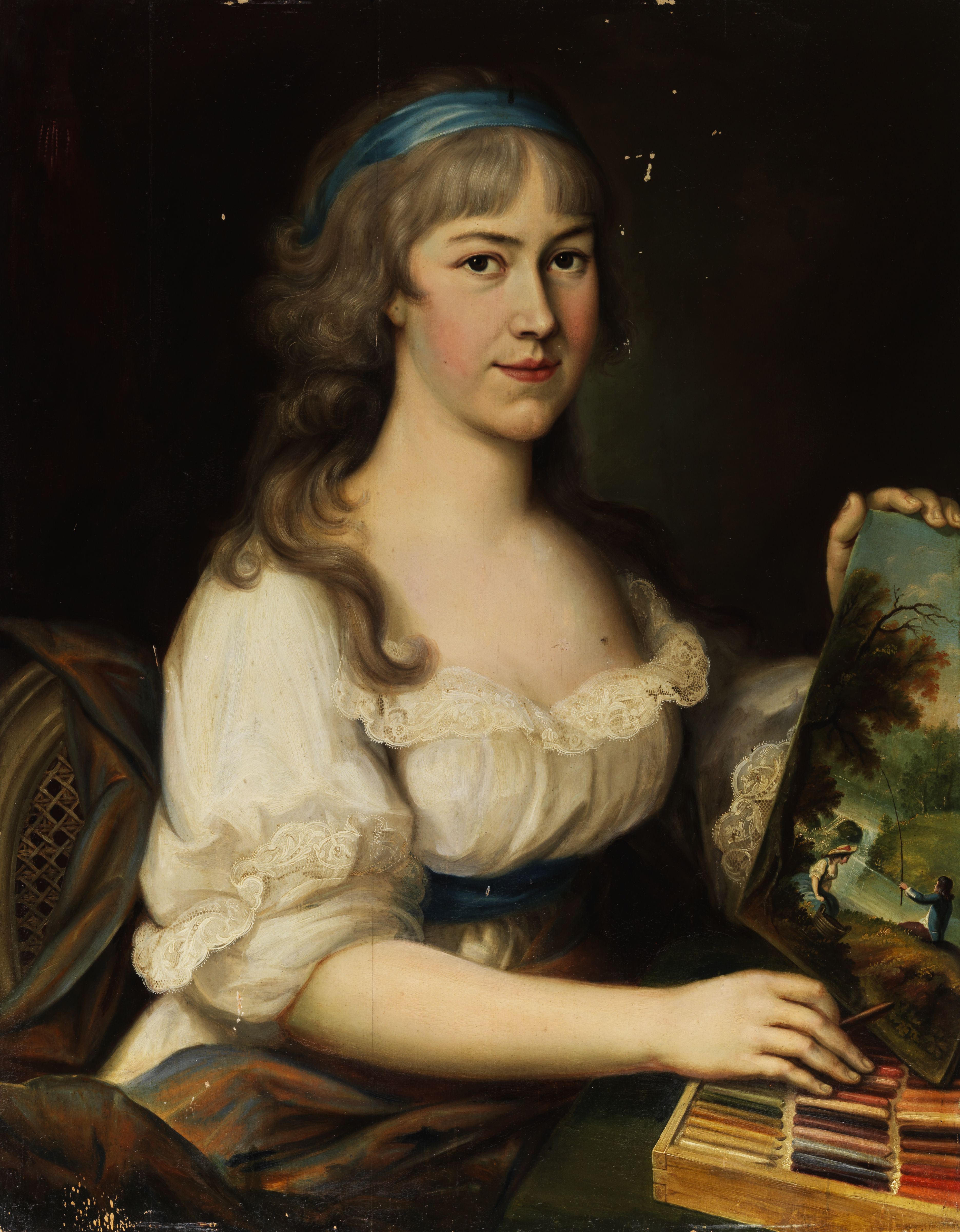
Around the time of the French Revolution pastels became associated with aristocratic frivolity (the rich was keen on having their portraits painted in pastels) and they fell out of favour for a while. This changed when the English masters of the 19th century took a new-found liking to them and pastels quickly spread to the United States and eventually to the rest of the world.
Nowadays pastels are often overlooked as children's or beginner's medium because of their ease of use. It's true that you don't need a lot of specialist equipment for them and that you can produce artwork relatively quickly (especially compared to oil painting) but pastel painting is actually hard to master with a lot of techniques completely unique to the medium. Perhaps the biggest evidence for anyone in doubt is the fact that pastels have the best archival qualities over any media: oils may discolour, crack and collect debris over the centuries, watercolour can fade when exposed to sunlight but pastels will stay unaffected when framed and stored correctly (more on preserving pastel work below).
Artists whose main medium is pastel often enthuse about the sense of freedom it gives them: pastels can be applied quickly with minimal preparation and without any water, solvents or tools which is perfect for people who don't like using brushes. It is well suited to the impatient artist who doesn't have time to wait for paint to dry or has a sporadic work pattern as pastels can also be left alone at any stage to come back to later. Pastels also have a tactile quality: applying them by hand can really give a sense of personal connection and can allow your intuition to take the lead.
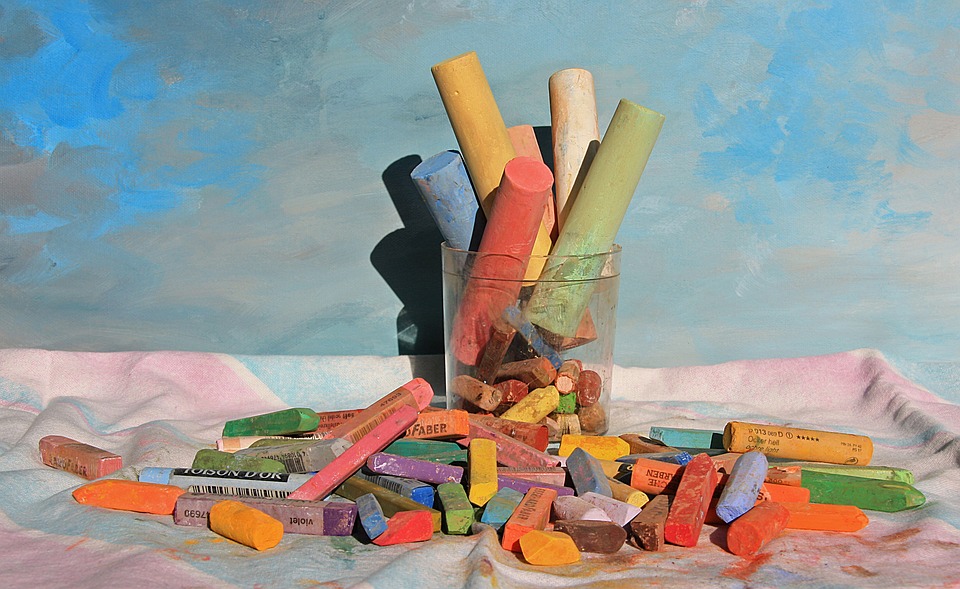
One of the downsides of pastels is dust: not everyone likes getting messy or have access to a well ventilated studio. Additionally, the powder of certain pigments (Cadmium, Chromium, Cobalt, etc) can pose a heath risk. Most reputable pastel manufacturers use imitation pigments (e.g. Schmincke) or ones that are not classified hazardous (e.g. Unison) but it is always a good idea to keep dust to a minimum and use protection such as dust masks and rubber or latex gloves for heavy use. Taking your pastel painting outdoors is also a good idea. Don't let dust deter you; pastel art at its best is quick, intuitive, colourful and unique and will potentially last hundreds of years with no change to its appearance.
Pastels - Sticks, Pans and Pencils
Pastels come in soft and hard sticks, in pans and as pastel pencils. Artist quality soft pastels have the largest pigment to binder ratio which make them extremely soft and intense and they are considered the most traditional form of the medium.
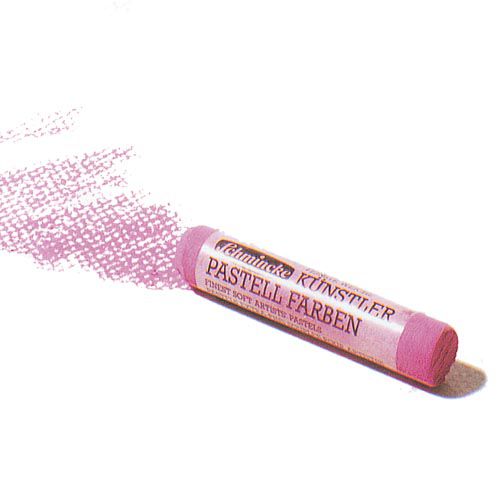
Their flat side can be used to block out areas quickly (this is called a dry wash) and their edges are perfect for detail work. You can even activate them with water and brush to create underpaintings. Soft pastels come in the most colours (some over 400 different shades) and in full sized or half sized sticks. Their softness varies across brands and you may need to try several before you find the one that fits your preferences the most.
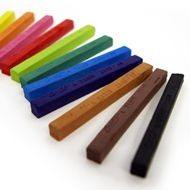
Hard pastels (sometimes called sketching crayons) contain more binders which make them firm and resistant to crumbling. The sticks are usually rectangular shaped. Hard pastels are compatible with soft ones, however, they produce lighter marks and most people use them for sketching or for adding detail to finished works. They generally available in less colours than soft pastels.
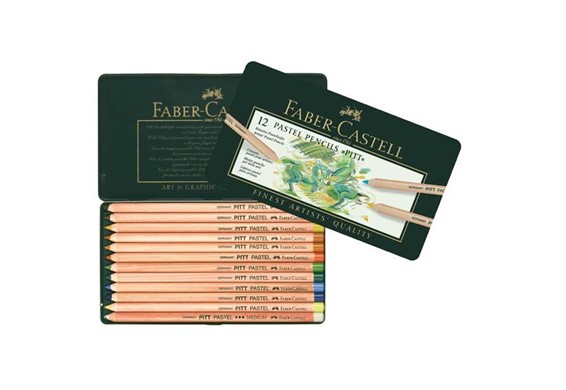
Pastel pencils lie somewhere between soft and hard pastels in terms of their constency. They are encased in wood which means they are less likely to crumble and easier to control which makes them perfect for sketching and for detail work.
They usually have a nice range of colours but not as much variety as soft pastels.
When you start out, it is best to begin with a set of 15-30 soft pastels. Whilst you won't get all the colours you might be using later, you will learn to blend with the basic colours and you can always add more later. A set of 30 is usually well balanced and will contain cold and warm tones of each primary colour as well as lighter and darker hues which will be more than enough to start out with.
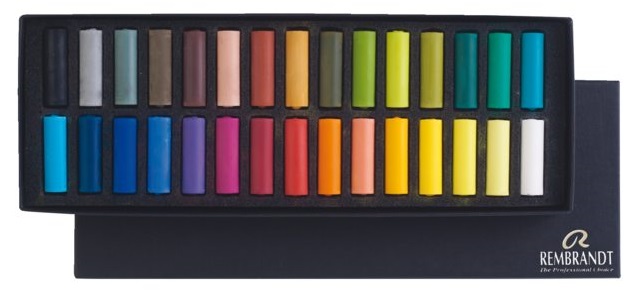
Depending on what subject you are planning to paint, you can chose a landscape, a portrait or an assorted set. They will contain colours specifically selected for that purpose. You can also find smaller sets (5-10 colours) that offer variations of one colour, pastel or grey tones and other themed sets which is a perfect choice if you have a specific project in mind.
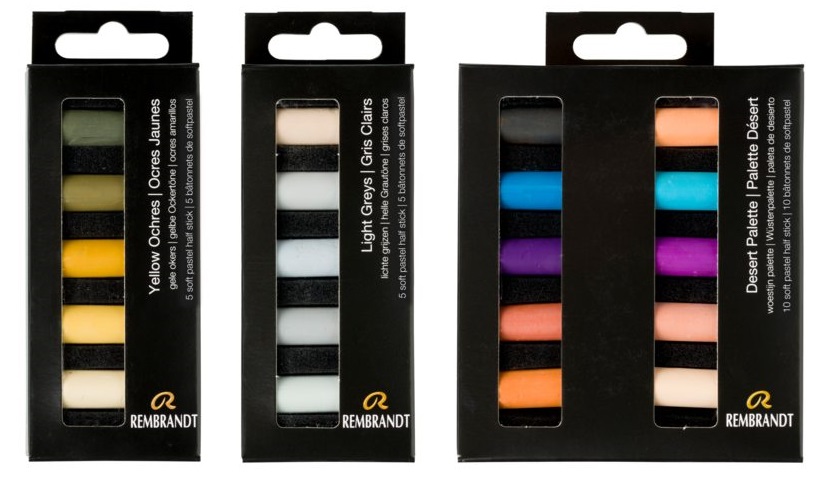
Pastel Surfaces
You can use pastels on any paper with a tooth or abrasive coating. The more abrasive the surface is, the more effortlessly the pastel grates on its surface (and the more it will use up).
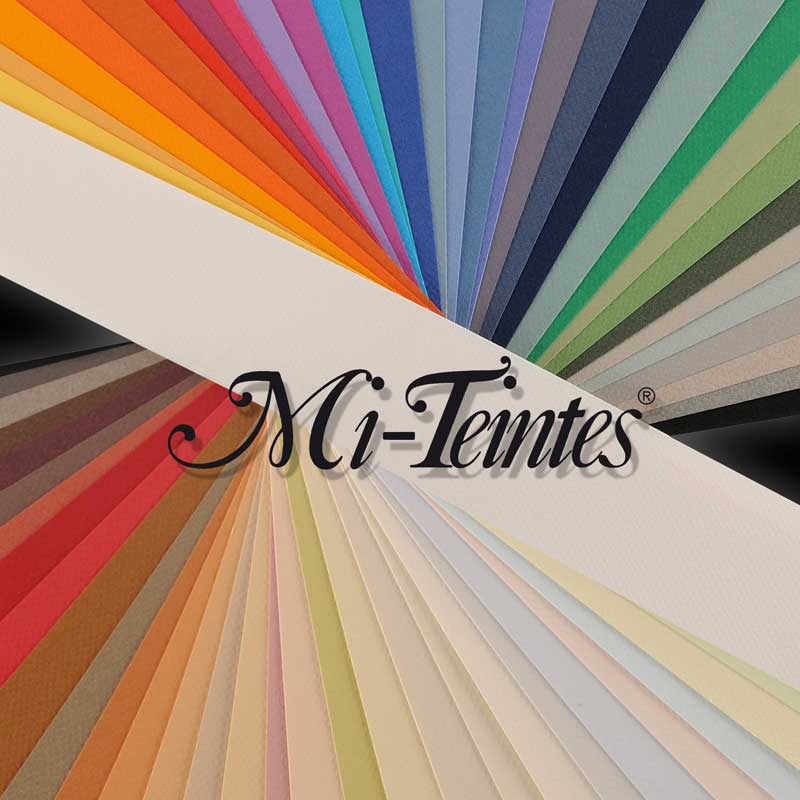
Some papers such as the Canson Mi-Tientes Touch range are coated with sand. This surface is great for not just pastels but for mixed media applications: you can use them with coloured pencils and paint. They are available in pads that contain assorted and themed colours and individual sheets.
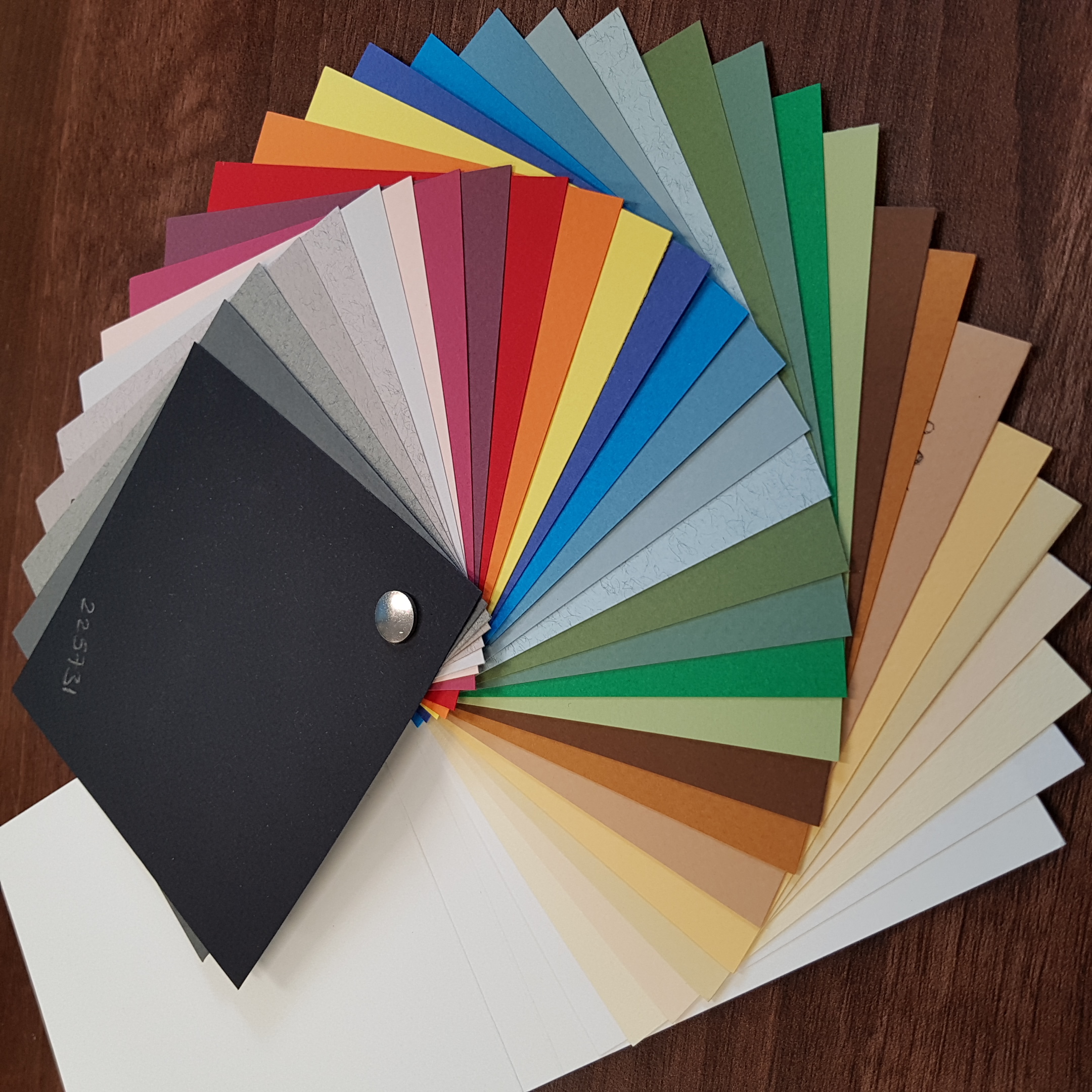
Fabriano Tiziano resembles watercolour paper with a fine tooth that is less abrasive. Like other pastels papers, these are also available in many colour variations. A base colour is very useful when you are sketching as it provides background and it is also great as a base tone when you are painting (covering the whole surface, rather than just sketching). The ranges' colours will easily inspire you. We have a handy sample book (image on left) that gives you a taste of the colours available.
Pastel Grounds & Accessories
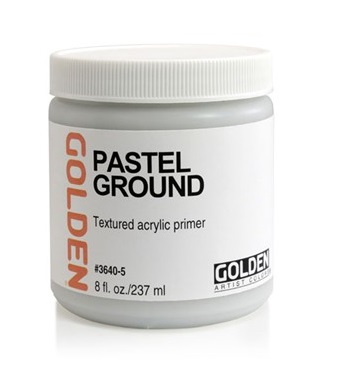
Pastel Grounds
You can turn any surface into pastel surface by applying a pastel ground first. It provides a great way to explore painting onto different surfaces such as paper, canvas, wood, glass and more - the possibilities are (almost) endless.
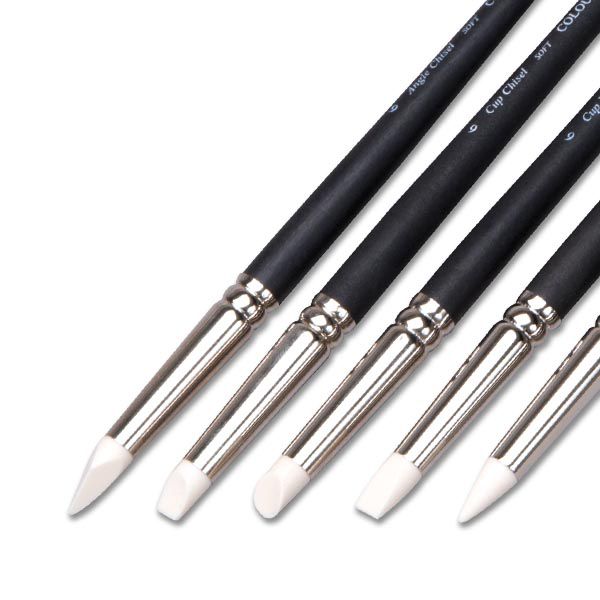
Colour Shapers
Colour shapers are versatile tools that have a silicone tip. You can use them for blending pastels (as well as for painting, monoprinting and for applying masking fluid). Much like brushes they come in various shapes and sizes that create unique marks.
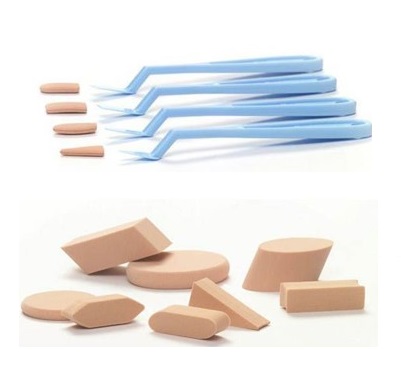
Sofft Sponges and Applicators
These handy tools were originally developed for the application of PanPastels. They come as sets of sponges and as applicators and they are very useful for blending, softening edges and for getting into hard-to-reach areas. The sponge tips are also washable and replaceable.
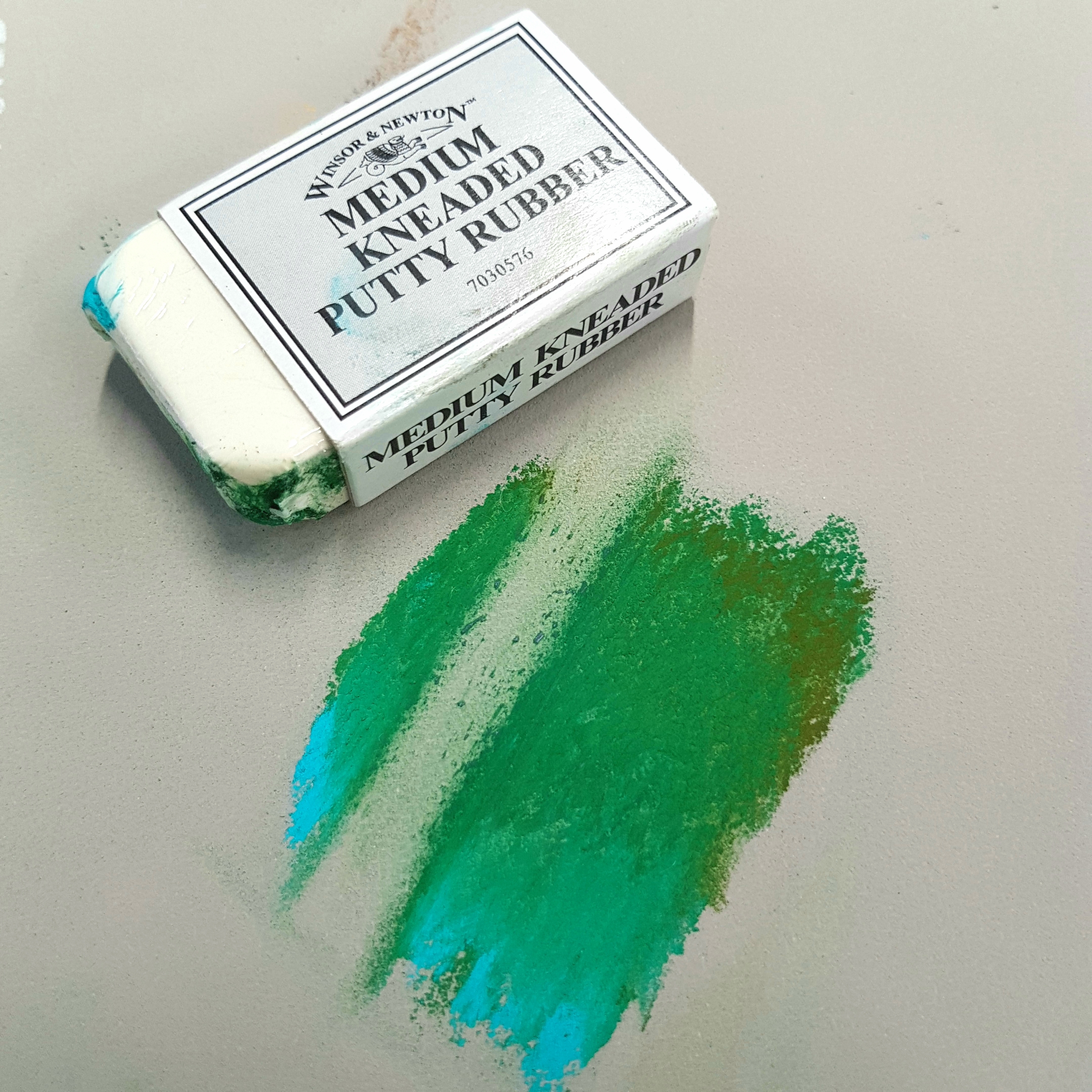
Putty Rubber
Pastels are quite tough to erase due to their highly pigmented content. Use a kneaded eraser (known as a putty rubber or just putty) when you need to rub out parts of your painting or for lightening areas.
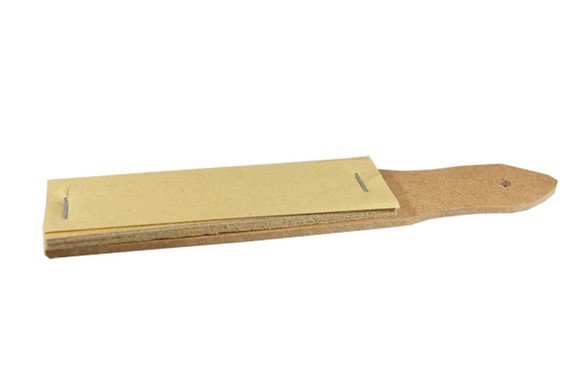
Sandpaper
Sandpaper can be used to sharpen and point pastels. Some (like the one on the image) are mounted onto wooden boards for easier handling.
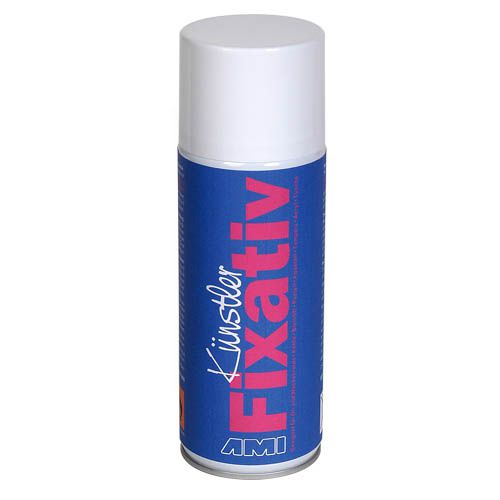
Fixatives
Fixatives are used to protect pastel paintings but note that they may affect the colour and the sheen of your work. Most professionals use fixatives only between layers: when the pigment gets too heavy the fixative restores the tooth and allows for more pastel application. Fixatives will never make a painting smudge proof though, so you should use other protective measures like a sheet of acetate (see-through plastic) when storing them in a folder.
Preserving Pastel Paintings
Pastels will last centuries when properly handled and outlive paintings of other media by a long way! When mounting your artwork you should frame it behind glass in a way that it does not touch the glass itself to avoid problems caused by condensation. Mountboard with a cut-out can make sure that there are a few millimetres left in-between. Additionally, using archival quality acid free papers like the ones mentioned above is essential as no matter the quality of pigment used and how well the artwork is framed if the paper underneath starts disintegrating after a few decades! When displaying framed pastel work it is also a good idea to leave some space between the wall and the artwork to allow some breathing space and avoid moulding issues. By following these practical tips you can make sure that you give the best chance for your artwork to be enjoyed for centuries to come.
A Quick Pastel Painting - A Cat Portrait
I could not finish this post without putting into practice all the above so I selected a handful of materials for a quick pastel painting. I used the following:
- Canson Mi-Tientes Touch Steel Grey paper,
- Sennelier soft pastels (Gold Ochre, White, Nastertium Orange, English Blue, Chromium Green, Cinnabar Green and a couple of bits of grey and brown
- Conté Sketching Crayon (hard pastel) in Vermillion Red
- Sofft Sponges for smudging
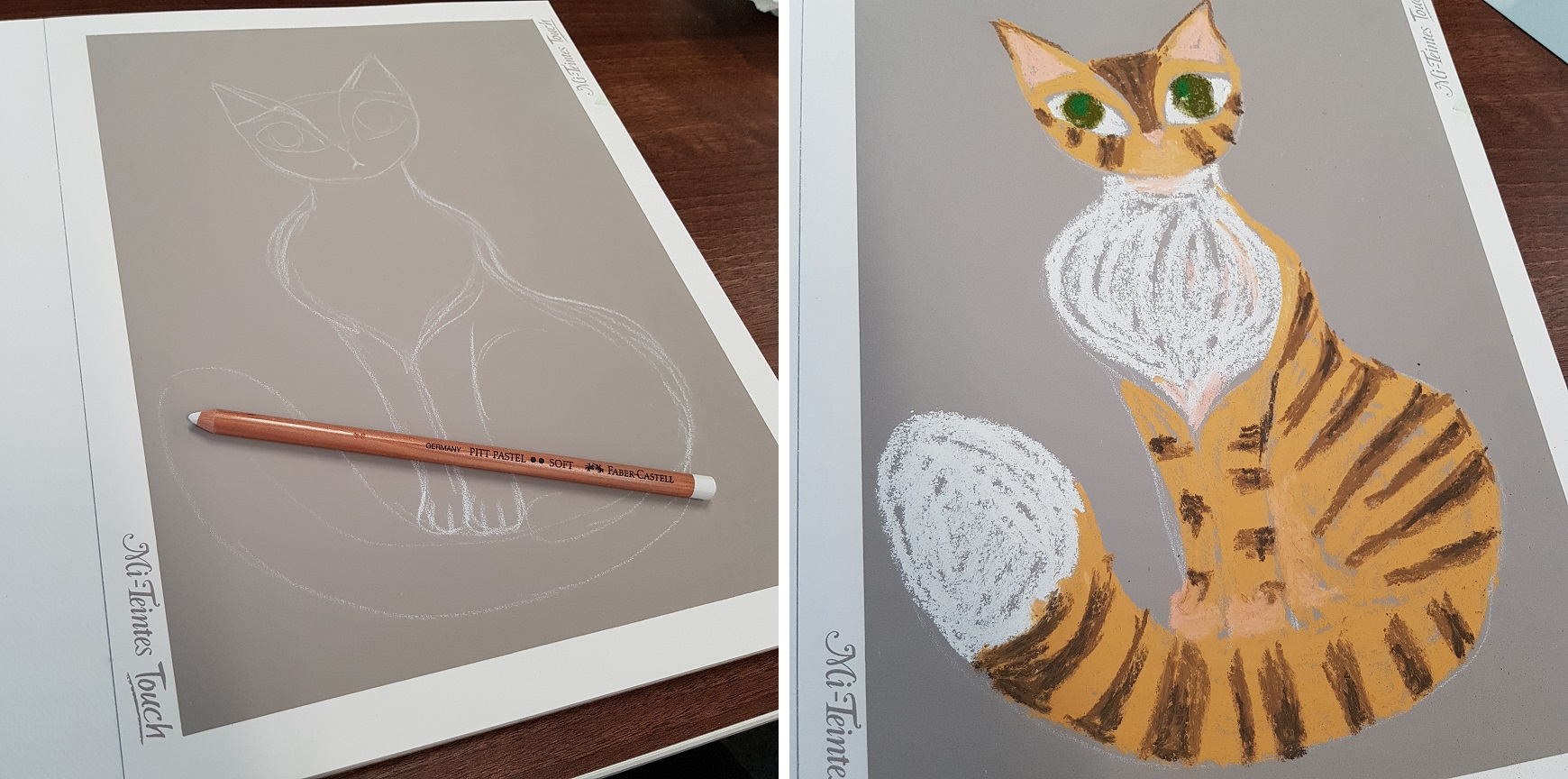
First I used the pastel pencil to draw a rough sketch of the cat. Then I applied the different colours to each area. As Sennelier is one of the softest pastels, I didn't have to fully cover each block as with blending I would soon fill in the gaps.
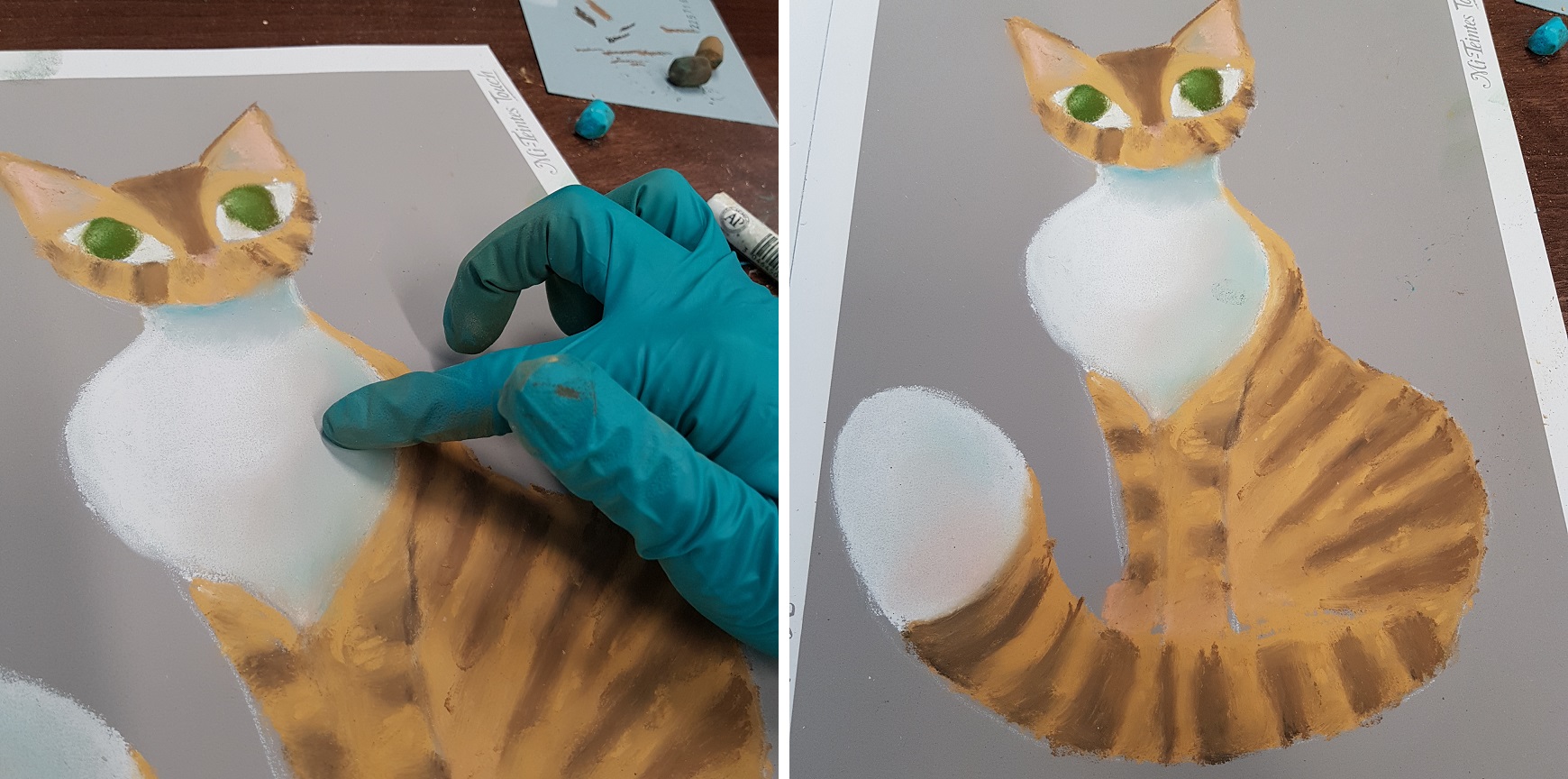
Then the smudging began. This is such a satisfying part of pastel painting, it can hardly be described! The pigment spread through the lightly sanded paper and filled in all the gaps, creating highly opaque and vivid colours in the matter of seconds. I experimented with pink and turquoise on the white areas to create shadow and I loved the effect this created. This is something I could definitely not achieve in my regular medium, watercolour.
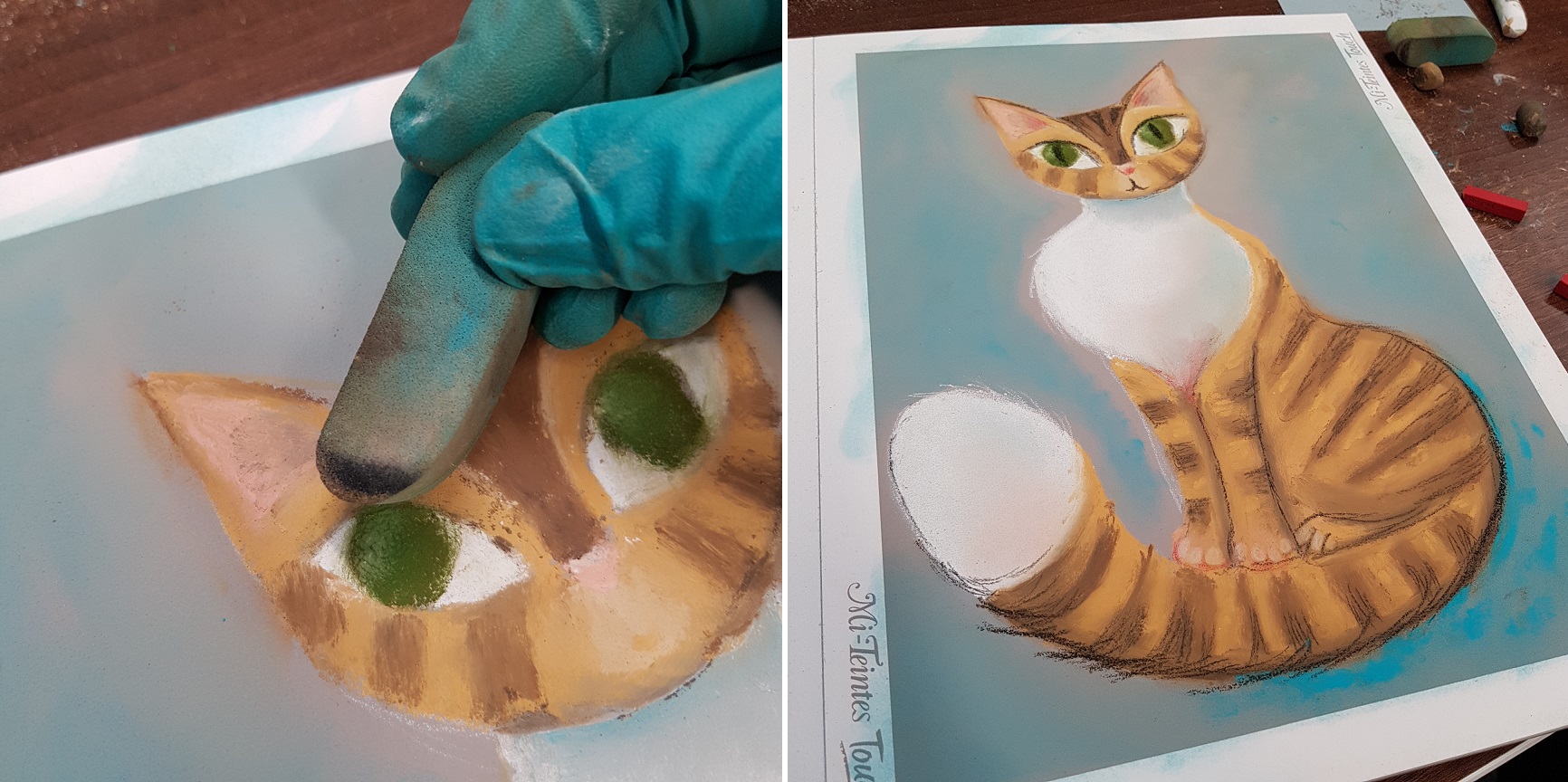
I used the Sofft sponges to blend the smaller areas such as the cat's face where my gloved fingers would have just made a mess. I also applied some of the turquoise roughly to the background, allowing the grey to still show through and started adding small details using both the soft pastels and the hard ones too.
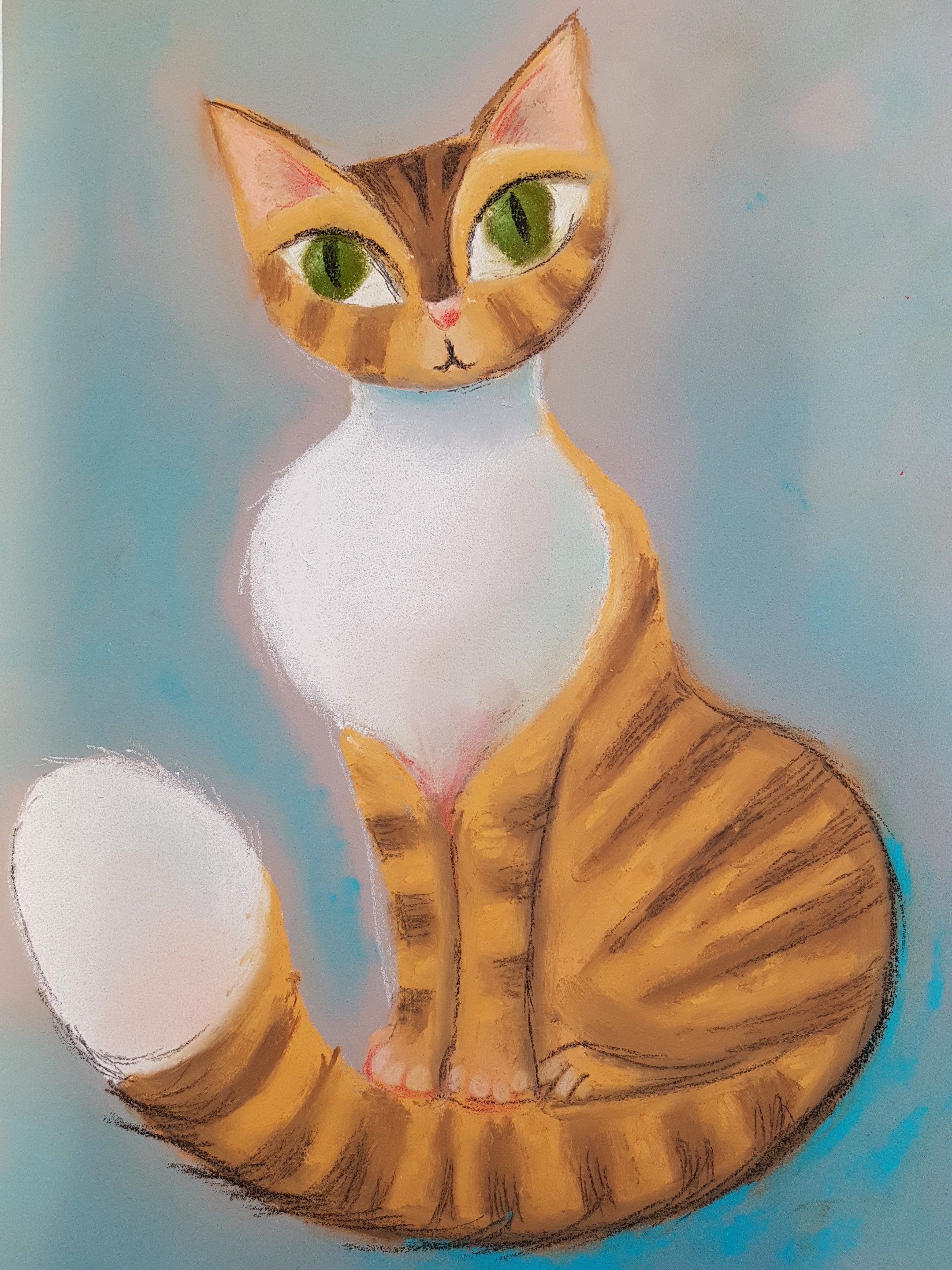
I really enjoyed using pastels despite my aversion to dust. Gloves helped a lot! The whole process took less than 30 minutes which is a record considering how long this project would have taken with watercolour. The colours are luminescent and the blending is really exceptional. I can really recommend this medium for anyone looking for quick gratification.
We hope you enjoyed reading this article and that it got you excited for trying soft pastels if you haven't before. Use this list to gather your materials or start with a Lawrence Pastel Starter Set that comes in a gift box with all the essentials for a beginner.
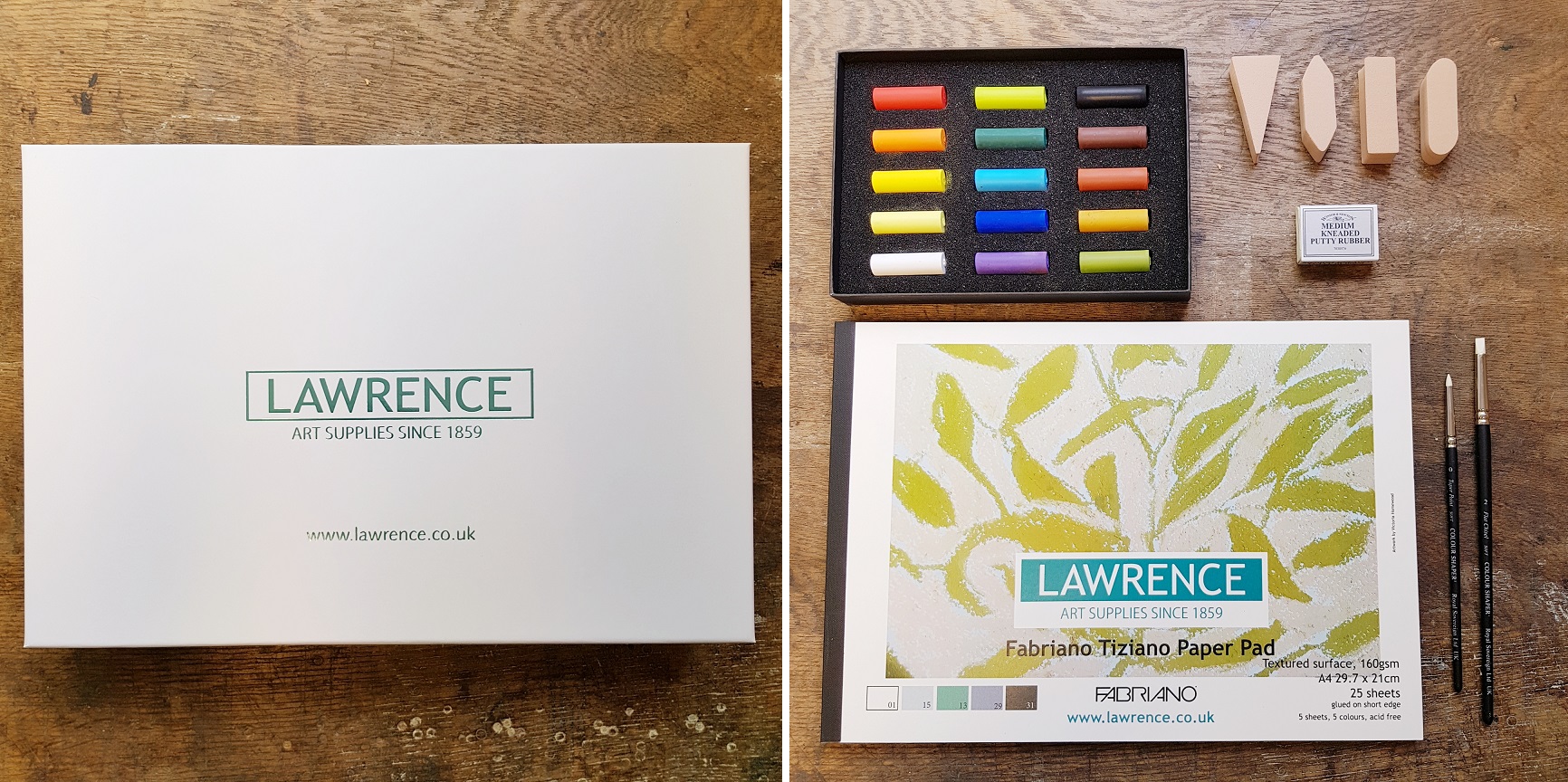
All materials mentioned here can be purchased on our website at www.lawrence.co.uk, by calling us on 01273 260260 ext1 or in our Hove Shop at 208-212 Portland Road.






